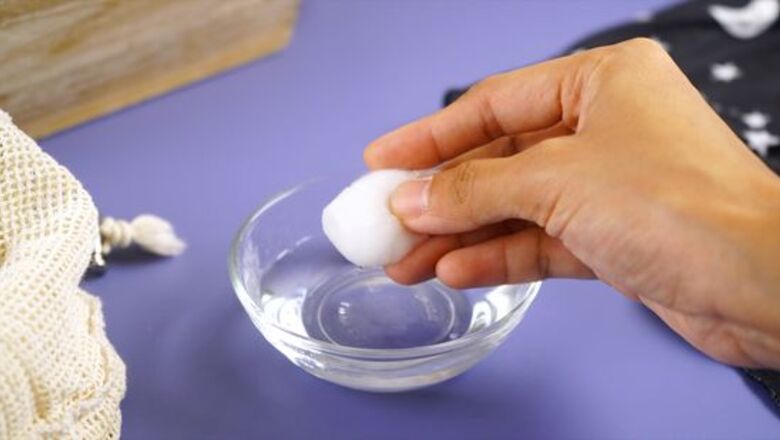
views
- Spot clean silk with lukewarm water, lemon juice, or mild vinegar.
- For stubborn stains, use equal parts water and mild ammonia or alcohol.
- Test cleaning solutions on a hidden part of the garment to make sure the color won't fade or run.
Spot-Treating Stains

Determine if the color will fade or run. Spot test the silk fabric by blotting a water-moistened cotton ball on a hidden point in the garment, such as an inside seam. If the color does not fade or come off onto the cotton ball, the garment is safe to hand wash. Whenever using any cleaning product, such as vinegar or alcohol, first test it out on a hidden portion of whatever item you’re washing. If any discoloration occurs, bring the item to a local dry cleaner to have it professionally cleaned. For spot-treating stains, the faster you get to the stain, the better. Immediately flush the affected area with cold water, rubbing the silk against itself to work the stain out without wearing the fabric. If water doesn’t work, proceed to use a natural cleaning product. Never use chlorine bleach on silk.
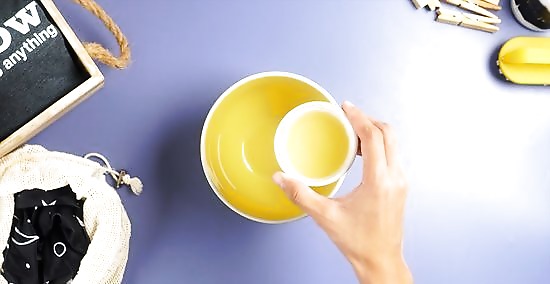
Use lukewarm water, lemon juice, or a mild vinegar solution to spot clean. Mix a couple tablespoons of either vinegar or lemon juice with two cups of lukewarm water to create a mild solution. Test it on an inconspicuous area. If there’s no discoloration, dip the stained area of fabric into your solution, use a clean spray bottle to apply it, or gently pour the solution over the stain. Mild solutions made with lemon juice or vinegar are good for getting out stains from perspiration or deodorant. Never apply undiluted vinegar or any other cleaner to silk. Always make sure vinegar, lemon juice, ammonia, or alcohol are diluted with lukewarm water.
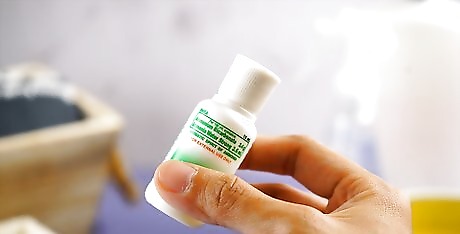
Use a mild ammonia or alcohol solution to remove tough stains. For tougher stains, such as persistent food stains, you’ll need to use a slightly stronger solution. You can try increasing your ratio of vinegar to water, using equal parts of each. If a stronger vinegar solution doesn’t work, mix equal parts ammonia or alcohol with lukewarm water. Diluted alcohol is great for getting out ink stains. Use ammonia to remove stains from chocolate, wine, or cosmetic products.
Handwashing Silk
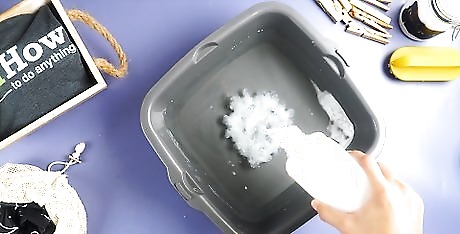
Fill a sink or wash basin with lukewarm water. Add 1 teaspoon (5 ml) mild detergent or soap to the water. Woolite or Dr. Bronner’s Baby Soap are both good, mild products. Swirl the water around to mix in the detergent. If you have hard water, mix a teaspoon of borax with the washing water. Lukewarm water should be the warmest water your silk comes into contact with. Never use hot water on silk.
Put your silk item into the water. Immerse the garment completely in the water basin. Gently pulse the water with your hands, moving it around so soapy water penetrates through the fibers. If desired, soak the item for up to three or four minutes. Wash only one silk item at a time. You don’t want to risk mixing colors.

Wash the item by delicately rubbing the silk against itself. Gently move the silk fabric around in the soapy water. Work any stains with your fingers, and rub the fabric against itself. This will provide some friction without wearing out the fabric. Don’t use any sponges or clothes that are harder or more fibrous than the silk, as they might be too abrasive for the fine fabric. When finished washing the silk item, pour the water out when finished washing your garment. Give the wash basin a good rinse to remove any lingering detergent or suds.
Rinse the item in cold water. Fill the basin with cold water. Rinse the silk item a second time to remove soap from its fibers. Once again, work the fabric against itself to provide gently agitation. Turn the garment over and around to ensure it is completely rinsed and free of soap. If you haven’t already spot cleaned with vinegar, consider rinsing the garment in a vinegar solution. White vinegar removes soap, restores shine and softens silk. Add 1/4 cup (50 ml) white vinegar to the basin of cold water. Gently move the garment around in the water to thoroughly rinse it. Empty the basin, then fill it one more time with cold water, and give the silk one last rinse. Alternatively, or if white vinegar is not available, add 1 teaspoon (5 ml) hair conditioner into the rinse water to soften your silk garment.
Drying Silk Safely
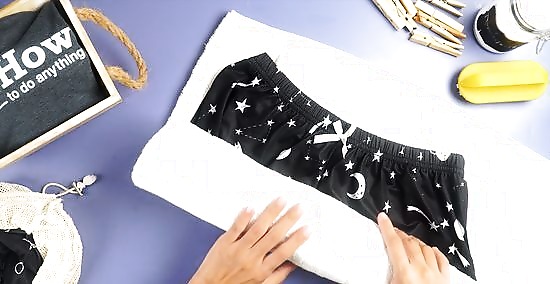
Use a towel to extract excess water from the silk garment. Take the item out of the water. Do not wring or twist it, or you’ll risk damaging the fibers. Instead, gently roll it up in a fluffy towel. Press the towel against the garment as you roll it, causing water and moisture to be squeezed out. Never put silk items into the dryer. The heat from the dryer will destroy the silk fibers and shrink the garment.
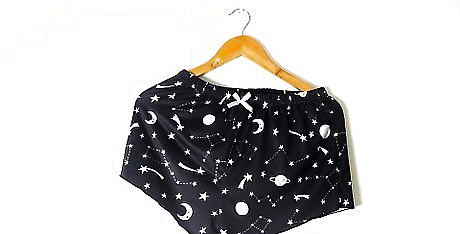
Hang the silk garment to air dry. Use a strong plastic or wood hanger to air dry your garment. Never use a wire hanger, or you’ll risk leaving an imprint on the fabric. Fasten any and all buttons, zippers, or ties to help ensure the garment holds its shape and dries without wrinkling. Make sure any wood hangers you use won’t leave any dye or stain residue on your garment. Avoid drying in direct sunlight, or you’ll risk discoloration or fading. Do not dry silk on a radiator or any other heat source.
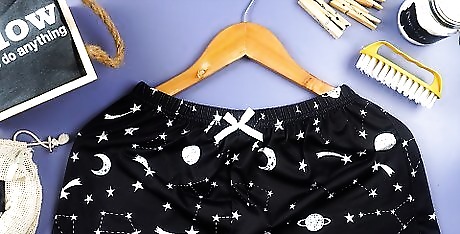
Remove wrinkles. Avoid using an iron to remove wrinkles from silk fibers. Hanging a silk garment overnight should remove most wrinkles. If absolutely necessary, you can consider using an iron on its silk or lowest possible setting to remove persistent wrinkles. Before using an iron, try hanging the silk item in the bathroom while you take a hot shower to release lingering wrinkles. Close the door and keep any vents off so the shower produces as much steam as possible. If you do use an iron, don’t wet a wrinkled spot, as this could cause rings or increase the risk of puckering or burning the fabric. Turn the garment inside out before you use the iron.

















Comments
0 comment